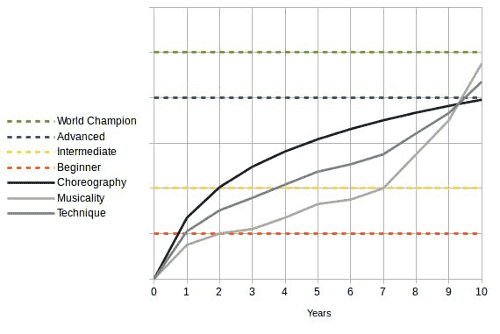 As some of you know I bought myself a bread-maker as a Christmas present, and of course being a man I plunged ahead and started on the first inaugural loaf. I had all the ingredients (well apart from the odd substitute here and there). I had most of the tools required (or thought I did until I couldn’t find some of them), so I did what most blokes do – I bodged it, guessed it, and made it work (sort of). I mean how hard could it be with a machine that did the hard work?
As some of you know I bought myself a bread-maker as a Christmas present, and of course being a man I plunged ahead and started on the first inaugural loaf. I had all the ingredients (well apart from the odd substitute here and there). I had most of the tools required (or thought I did until I couldn’t find some of them), so I did what most blokes do – I bodged it, guessed it, and made it work (sort of). I mean how hard could it be with a machine that did the hard work?
So what has this got to do with Argentine Tango? Well I learned a few things by doing something new which I’d never done before just as we all do with our tango adventures.
Make sure you have all the ingredients.
I did have all the ingredients for my loaf apart from one substitute.
In tango terms, to dance the tango well you need the right ingredients – some choreography, executed with good technique, in a fitting musical way, and in an Argentine Tango style. Some things can be substituted without reducing the yumminess of your tango. For example, choreography. You can use all sorts of different choreography to dance tango. Other things can’t be easily substituted without making your tango a bit less flavoursome, for example technique. Even the simplest of choreographic movements just look and feel better, and can be performed easier if you have good technique.
Make sure you have the correct tools
Straight off the bat while doing some basic pre-baking tasks I burned my thumb because… I didn’t have a proper oven glove and just used a thin dry tea-towel to pick up a hot tin. Ouch!
Also I could only find half my weighing scales (and not the measuring bit) so had to guess some of the major ingredients.
In Tango terms this might be any thing from lack of technique to lack of floor craft. For example with floor craft, maybe a leader starts a movement in a busy milonga and suddenly finds they’ve run out of room to complete the move, resulting in a collision.
Or a leader trying out newly learned figure in a milonga which they are not reasonably sure they can perform well. We all attend classes and learn new things, but do you want to immediately try it out in a milonga before you have practised enough to make sure you can lead or follow such a movement? My own rule of thumb is if I can’t be 90% confident of leading a movement with any dancer, then I don’t use it in a milonga, until I’ve practised it enough.
Performing the task correctly
With my first loaf I took longer than the instructions suggested to mix the flour and liquids, and almost forgot the last bit of milk to apply. Actually I didn’t forget. All the milk went in earlier in the process when only some of the milk should have gone in. I didn’t read the recipe properly! I put some more in when I realised I hadn’t saved a bit
In tango terms an example might mean using floor-craft to make sure you have
- enough room to complete your intended movement without having to cut it short, by monitoring the couple in front of you and in front of them to make sure you pick up signals about potential blockage early, or
- a back up plan if you can’t complete a movement. Don’t try to complete a movement even when it’s totally obvious to all around that you don’t have room to do this without bumping another couple. If you commit to a movement, without respect for other dancers, you’re not dancing social tango.
Having patience for things to come together
So I finally had all the ingredients in my bread-maker and it was sloshing the mix around creating the dough prior to cooking. I stood and watched through the window in the top of the machine. It was like watching paint dry, but I couldn’t help coming back every 10 mins or so (in a 2 1/2 cooking cycle), just to see if anything interesting was happening. It wasn’t…
In Tango terms this could be the impatience we often get with our ‘lack of improvement’. We never seem to get ‘good’ quick enough! Learning takes time, and improvement may be imperceptible, but is nevertheless happening. Have patience with your own progress and keep learning and practising consistently.
I’m sure there are many more analogies one could draw between baking and tango (perhaps the tango bakers out there would like to suggest further ones? 
Finally, I’m sure you’d all love to know what happened with the first ever loaf I baked? Was it Mmmmm… 








